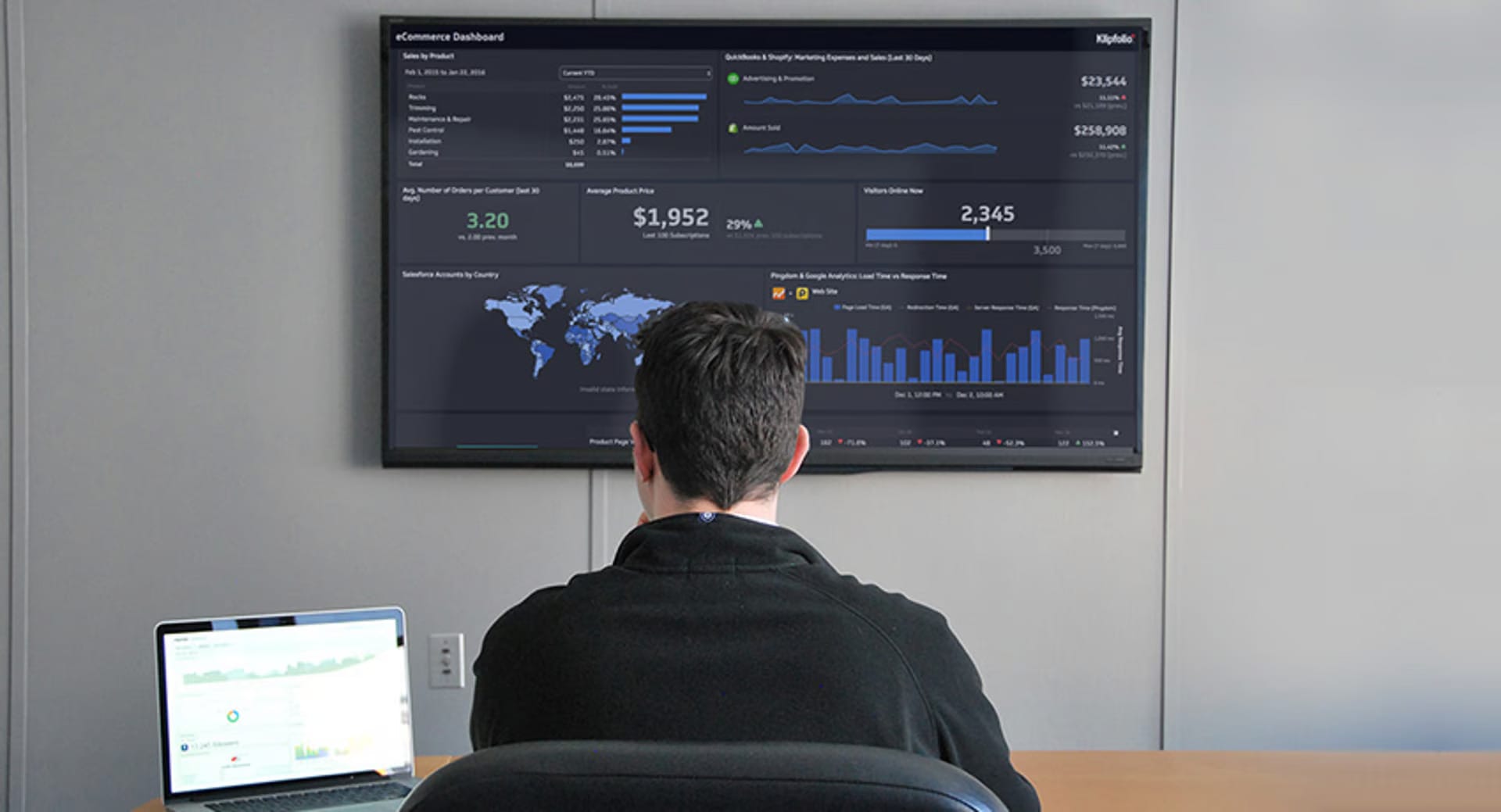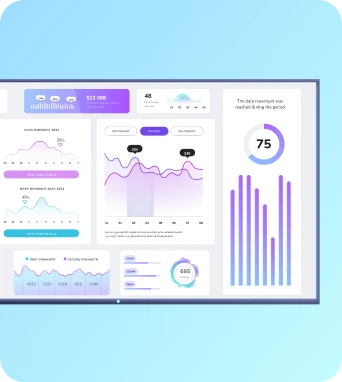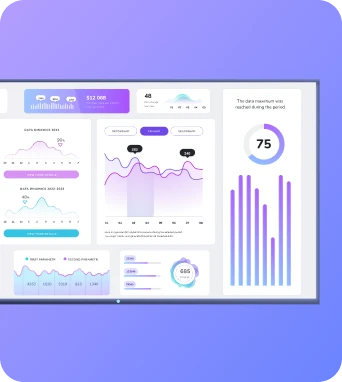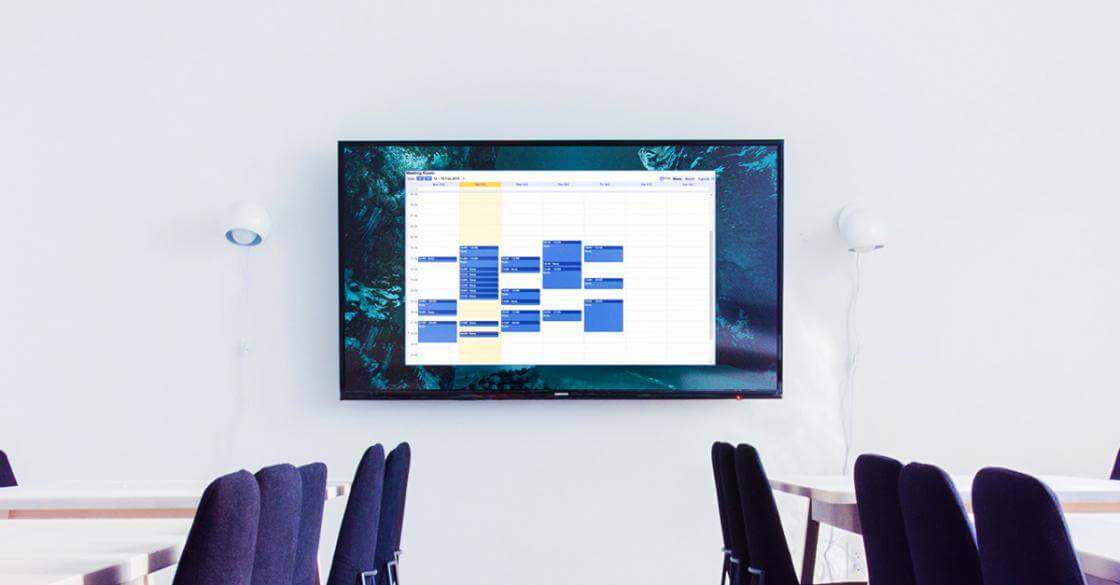Trying to customize your digital signage? You might be at the mercy of your CRM.
But depending on your provider, you can use digital signage APIs to get even more control over signage capabilities. You're no longer limited to just built-in software integrations — with the right digital signage APIs, you can adapt almost any platform to practically every need.
This guide explains everything you should know about digital signage APIs, including what they are, how they work, and how to get started. It also explains how to integrate Fugo's digital signage with the rest of your business tech stack.
But first:
What's a digital signage API?
A digital signage API (also called an Application Programming Interface) allows businesses to connect their digital signage with various data sources and third-party applications. In simpler terms, it's a set of code that helps third-party applications communicate with your content system.
The goal is to create a customized, dynamic, and interactive user experience depending on the platforms and existing systems you want to connect.
Let's say you want to connect your Google Calendar to a digital signage screen. With an API, you can integrate the two so there are updated events on display at all times.
What about the prices of menu items? If you connect with Google Sheets or a similar platform, you can update playlists and digital menus at a glance.
The possibilities, as you can see, are virtually limitless.
But at the end of the day. . .
Do digital signage APIs matter?
Setting up a digital signage API sounds great on paper, but it can also be overwhelming for those who aren’t developers or tech gurus. If you're a growing small business without an IT hero, for example, APIs may not feel like something you can manage alone.
The truth is that a digital signage API is a lot less complicated than you'd think. And if you're willing to partner with a world-class system like Fugo, you could enable tons of new features for your digital signage software.
The benefits speak for themselves:
- More flexibility. You're not limited to just the built-in features in your digital signage app.
- Ease of scheduling. You can make simple updates on (almost) any platform and see the results on your digital signage screen.
- Integrated tools. Keep the core pieces of your tech stack connected.
- Customize content. Manage all images, links, and videos displayed on your digital signage screens from a variety of tools, platforms, or integrations (think Dropbox or Google Drive)
Does Fugo have a digital signage API?
Sure do! We've got documentation for our Developers Environment API so you can integrate with existing applications whenever you need.
We also offer:
- REST API
- GraphQL API
- Zapier triggers (which help with content overrides)
Don't have a developer on your team? Fugo is here to help. We're here to help you integrate with whatever you need, from media apps to scheduling platforms and everything in between.
With this in mind, let's take a peek at some of the ways you can use Fugo's API:
APIs you can use with Fugo's digital signage
Here are three ways to get the most out of our digital signage API:
Connect with TV dashboards

Want to share real-time data with the rest of your team? Signage API makes this easy. You can connect with the tools you're already using — including Looker, Tableau, and Power BI — and easily put mission-critical on display.
Without paying for expensive viewer licenses, by the way.
Here are a few other benefits to keep in mind:
- You can integrate your dashboards with TV screens, Slack channels, or Notion pages.
- It's easy to securely display self-hosted data with on-premise dashboards and 2FA.
- Your data display is a live image slideshow that automatically updates every few minutes.
Learn more about Fugo's TV dashboards.
Build interactive content

CRMs like Fugo come pre-built with everything you need to build interactive content for everyone to enjoy. It only takes minutes to create employee portals, interactive maps, and simple product directories.
But maybe you want your business to have more interactive capabilities — like POS integrations, menu ordering, or connections with multiple platforms to create kiosk forms.
The good news is, there's no need to handle this all on your own. The team at Fugo would be happy to integrate your signage with the web applications you need to be successful.
Learn more about interactive touch projects with Fugo.
Make custom automations
The bigger your signage program becomes, the more work it takes to keep it running. That's why automations have become so popular these days: they’re the easiest way to do more work without manual intervention.
For example, automations can trigger a priority takeover playlist (such as emergency announcements) without you having to edit the content displayed in your CRM. You can also connect with tools like Zapier to create seamless workflows in practically any industry.
Zapier allows Fugo to connect with more than 500 other apps so you can build the automation workflow(s) that make sense for you. It's quick and easy to build triggers or 'Zaps' that work while you sleep and keep everything organized.
Here are some ways to connect your Fugo digital signage with Zapier:
- Make changes in a Google Sheet to automatically update playlists in Fugo
- Show which leads have converted into closed deals using Google Sheets and Fugo
- Connect social media like Instagram or Facebook to instantly update social media walls
- Showcase announcements on Microsoft Teams on screens connected to Fugo
- Content updates in Asana (such as project progress) automatically update in Fugo
How to use Fugo's digital signage APIs
Managing content with signage API mostly depends on your use case.
Just looking for the CliffsNotes?
Here's a basic workflow:
- Sign up for Fugo.ai. Our GraphQL API is available on our Essential plan ($20 per screen per month).
- Get your API key. This will help you set up a development environment so you can test integrations before they go live.
- In your development environment, test your API calls (aka API requests). These will help you establish basic connectivity and ensure you have full control of the platform.
- Start integrating your apps with more complex features. Now is the time to test automatic playlist updates, real-time data feeds, screen control features, and more.
- Publish the connection in your development environment into a final production environment. Be sure to monitor the publication and rollout process so your platforms integrate as expected.
Start Integrating with other systems using Fugo
Digital signage and APIs go together like peanut butter and jelly.
All you need is documentation to get up and running — plus a little inspiration for how you want to connect your platforms.
Fugo offers API access on every plan so you can truly customize digital signage for your business.
You can learn more about our API documentation (and the integrations available) by contacting our team at support@fugo.ai.






